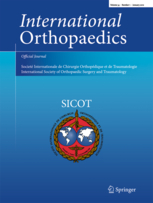
Arthroplasty
Survivorship & clinical outcome similar between cementless & cemented TKA in patients <55
Int Orthop. 2014 Feb;38(2):297-303. doi: 10.1007/s00264-013-2243-4. Epub 2014 Jan 14Eighty-five patients under the age of 55 and scheduled for bilateral total knee arthroplasty had one knee randomized to cementless fixation, and the other to cement fixation. The purpose was to determine if there was a difference between fixation types regarding component survival, clinical outcome, complications (ie. osteolysis) and revision. Follow-up was conducted for 16-17 years postoperatively. The results at final follow-up indicated that component survivorship was high and similar between groups. Clinical outcomes improved significantly in both groups, and were similar between them.
Unlock the full article
Get unlimited access to OrthoEvidence with a free trial
Start TrialCritical appraisals of the latest, high-impact randomized controlled trials and systematic reviews in orthopaedics
Access to OrthoEvidence podcast content, including collaborations with the Journal of Bone and Joint Surgery, interviews with internationally recognized surgeons, and roundtable discussions on orthopaedic news and topics
Subscription to The Pulse, a twice-weekly evidence-based newsletter designed to help you make better clinical decisions
Exclusive access to original content articles, including in-house systematic reviews, and articles on health research methods and hot orthopaedic topics
Or continue reading this full article
Register Now

Subscribe to "The Pulse"
Evidence-Based Orthopaedics direct to your inbox.




































